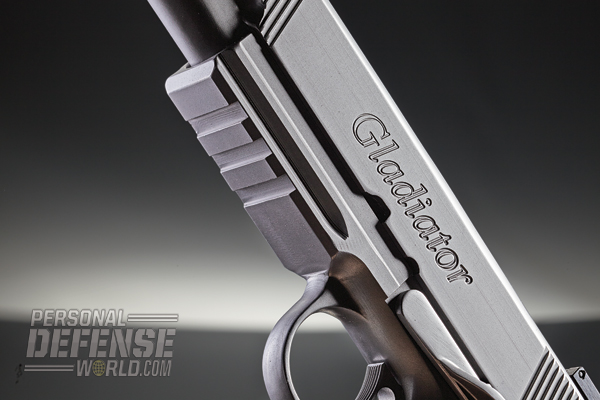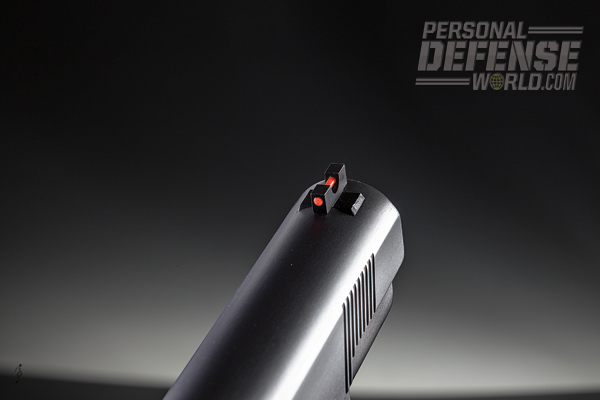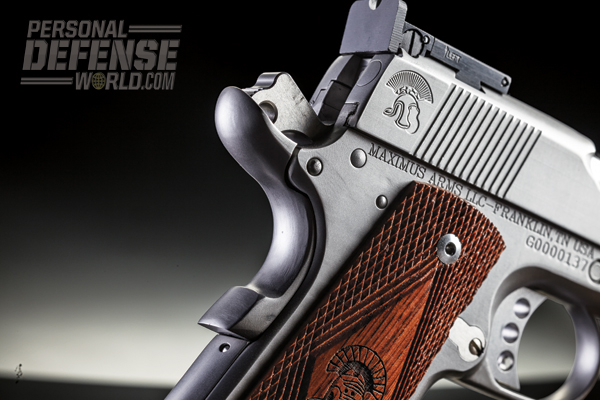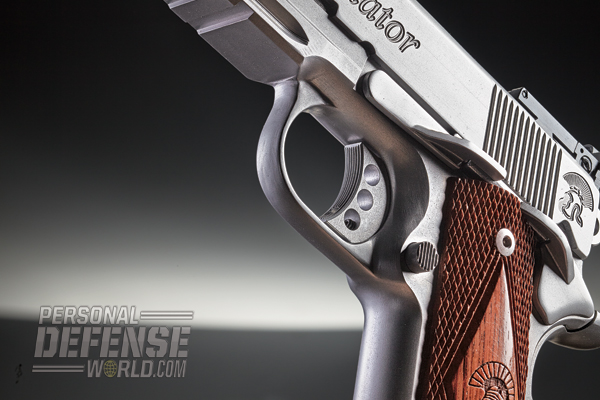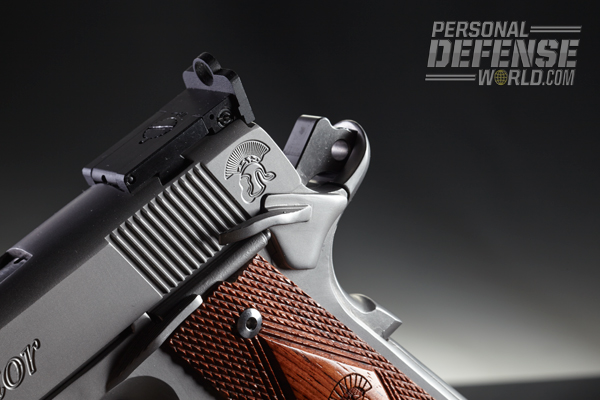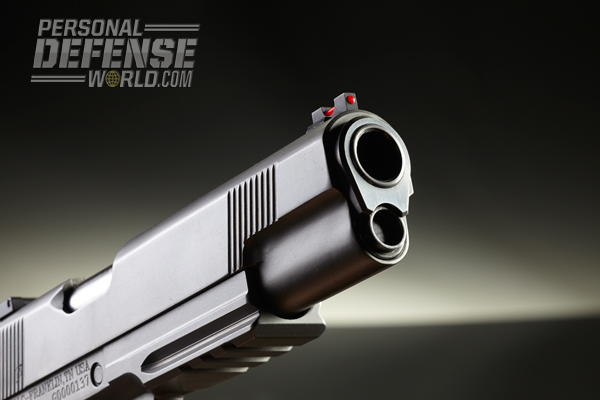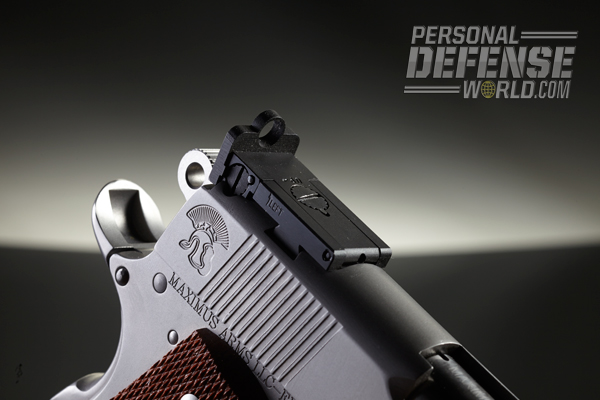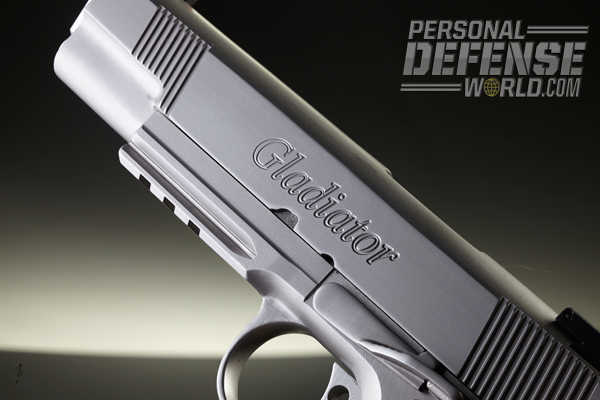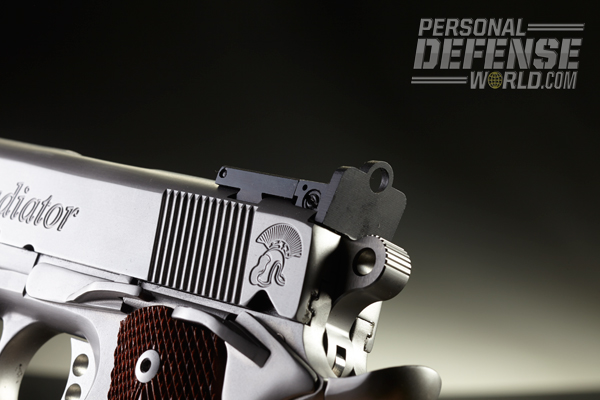Watch the video below for more on the Maximus Arms 1911 Gladiator .45 ACP!
These days, base 1911 pistols rival the custom guns of old in performance and quality as standard features become increasingly impressive. And whereas a production 1911 just shy in build quality of a custom pistol can cost between $1,200 and $1,500, a lot of custom 1911s now start at close to twice that number, putting them out of reach for most. It makes for a very competitive mid-range market in which it can be very difficult for a maker to separate itself from the herd. There are only so many things you can do without reaching into the truly custom market. It is also difficult to make significant changes without driving up prices in general. Unlike polymer pistols, nothing on a 1911 is truly drop-in, so making changes requires fitting. For the most part, it is just another 1911 with different parts and marketing. You just need to pick the one you want. However, there are a few companies trying to change things a bit, and Maximus Arms is one such company.
Gun Details
Advertisement — Continue Reading Below
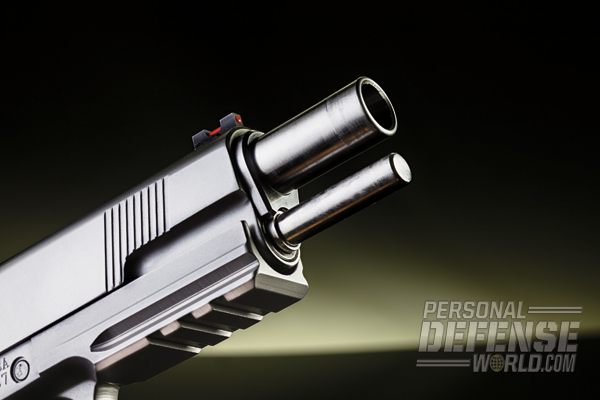
Maximus Arms began in 2010 with the idea of building an “improved” single-stack 1911 pistol. After spending two years in this process, the company came up with 80 dimensional changes to the original design. It also decided to go with what it believes is the toughest material for a 1911 pistol. Looking at materials used to make the M61 Vulcan 20mm rotary cannon, the Patriot missile and M1 Abrams tank, it settled on 17-4PH stainless steel. Steel in hand, and taking input from experienced police and military shooters and armorers, Maximus machinists and engineers came up with the Gladiator. It is a 1911 pistol with some truly different features, all designed with the intention of being the most rugged, ergonomic and corrosion-resistant 1911 pistol on the market.
The Gladiator is made from a precipitation-hardened stainless steel. Precipitation hardening is also referred to as “age hardening.” Keeping it simple, it is essentially a method of heat treatment over a prolonged period of time. The idea is to provide the correct hardness while maintaining workability and a broad range of properties, including corrosion resistance and longevity. Ametek, a large metals provider, refers to 17-4PH as the “workhorse of precipitation-hardening stainless steels.” This steel seems to have some excellent qualities for firearms, and given its use in jet engines, large firearms and a number of rocket/missile components, it should provide a very long service life in a 1911 pistol.
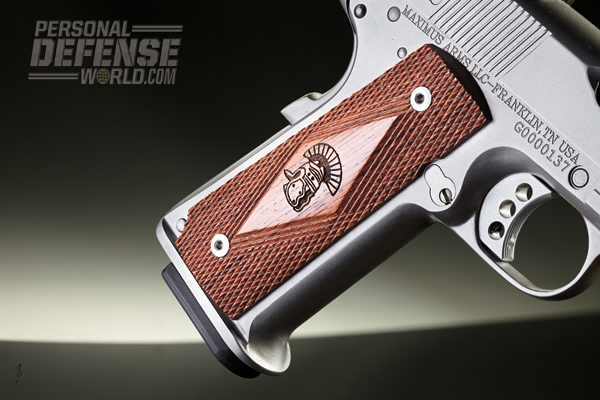
The Maximus Arms Gladiator looks (mostly) like a standard 1911. Based on the spec sheet and general observation, there are some obvious (and some subtle) differences, mostly in the frame. The model includes an integral, flared mag well and a lower lip. It is matched to a custom mainspring housing that includes a lanyard loop, and it is indented to make for a larger mag well opening. Integrated into the slide, it is matched, smoothed and well melted. Coupled with a custom-made grip safety and a high-cut front strap, you get as high a grip as is possible with a 1911 pistol. The Gladiator also has a “ready one” indentation machined into the frame just above the triggerguard, providing for placement of your trigger finger when not in the triggerguard.
Advertisement — Continue Reading Below
Instead of being staked, the plunger tube is part of the frame, making it as permanent as it gets. Another nice touch is an integral ejector. Again, this is part of the frame, not an added piece that needs to be staked or pinned. As a tactical pistol, the Gladiator includes a rail, but unlike most it includes three notches, not just one, allowing for just about any light (and even some of the new lasers) to mount up easily. There was no checkering on the front- and backstraps (though a fish-scale mainspring housing is now being offered to customers as an option free of charge). Everything on the frame is nicely melted and smooth. An extended slide stop is cut flush with the frame on the right side. This pistol has a single-side, tactical-style safety and a slightly extended magazine release. The trigger is a match aluminum design, and it broke cleanly. The grips are wood.
The Gladiator is a Series 70 pistol, which means there’s no plunger in the slide. It houses a match-grade barrel that is mated to a match bushing. The gun uses Sprinco’s recoil-reducing recoil spring and guide rod. The ejection port is flared and lowered for solid ejection, and a .38-caliber firing pin has also been installed. Cocking serrations are located at both the front and the rear. Front sighting is accomplished with a fiber optic that is dovetailed. Rear sighting is a target-cut, adjustable ghost ring. The slide, frame, slide stop, thumb safety, grip safety, hammer and mainspring housing are all made of 17-4PH stainless steel. It ships in an airline-approved case with two eight-round magazines and a cool, custom barrel-bushing wrench.
Range Time
Advertisement — Continue Reading Below
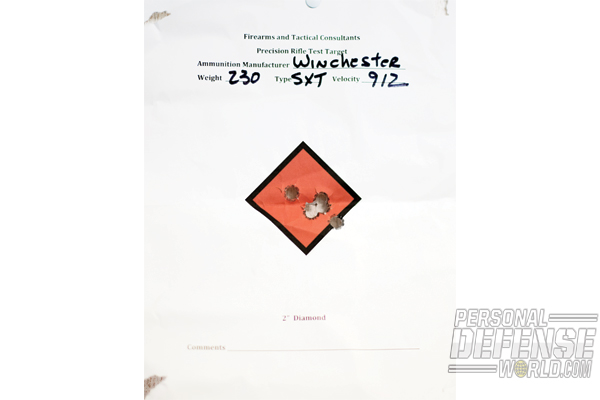
Holding the Gladiator, I found it to be very solid, which is not something I expected to achieve without checkering. The lip on the mag well really helps here, as does the high grip. My large hands help, as there is no space between the triggerguard and my little finger. Shooting it at 25 yards, I achieved some highly accurate results, with the best group measuring right at 1.5 inches using Winchester 230-grain Ranger SXT. The Gladiator proved accurate with everything it fired.
The mag well facilitated very positive magazine swaps. If you subscribe to the conventional reloading method of placing the flat of the magazine against the back of the mag well and then inserting, you will really like this setup. The design of the mainspring housing makes this really easy. Using several different magazines, they all inserted smoothly and made for some pretty fast reloads for a single-stack pistol.
Reliability was excellent throughout with my Wilson, Tripp and McCormick power magazines. I’m not sure who made those provided with the pistol, but over the course of the first 100 rounds they caused a few malfunctions. Swapping them out fixed the problem. That blip aside, the Gladiator proved to be a very reliable 1911 pistol with excellent accuracy.
Advertisement — Continue Reading Below
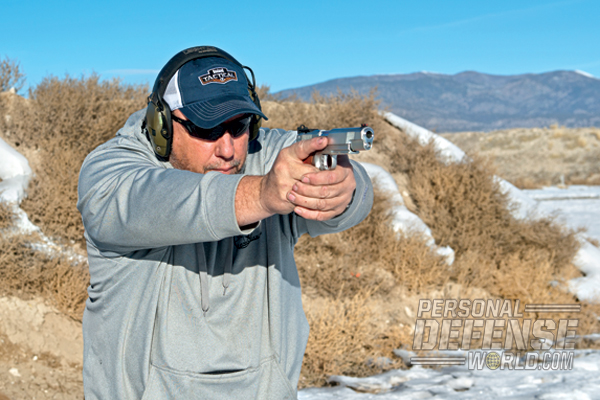
Fiber-optic front sights are fine; they remain popular and certainly are easy to see. I really tried to like the ghost-ring rear sight, but never quite could. This type of sight is not new by any means; they have been around for years. While perfectly suited to a rifle, I find them problematic and slow with a pistol’s short sight radius. The pistol can be had with more conventional sights for those more accustomed to a traditional look.
While the grips are great, my preference in a carry pistol is for a more aggressive G10 of some sort, and, given the custom nature of the frame, a set of my 10-8 Performance grips were tested for installation. They fit without issue. In fact, three sets were tested, including flat-bottom and tapered styles, and they all fit without issue. So, with the Gladiator, you can attach whichever 1911 grip best suits you.
Final Thoughts
Advertisement — Continue Reading Below
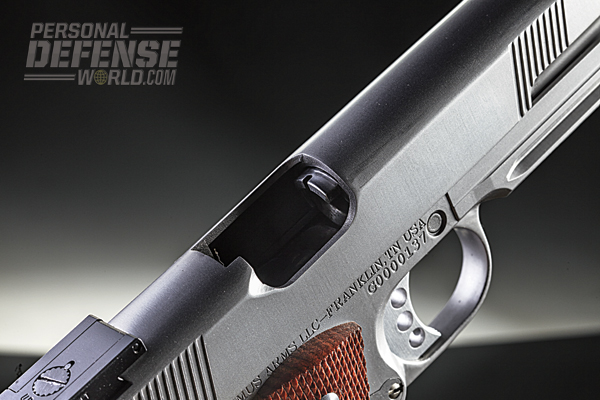
Overall, the Gladiator is a finely built 1911 pistol with some very interesting alterations to the standard design. Having carried an aggressively checkered 1911 for decades, it was odd to use a smooth one. That being said, it worked great, even with gloves.
All of the Gladiator’s built-in features, like the ejector, safety plunger and magazine well, should provide for excellent longevity. Given the properties of the steel, my guess is that the ejector will last forever, and the rest of the accessories integrate rather nicely. The magazine well is very well done, offering as usable a platform as possible with the single-stack design.
My only two issues in terms of build in a combat pistol are the sights and the magazines. It would be nice to have a couple of mainstream magazines. This isn’t a big deal since most people spending $1,700 on a 1911 have a preferred magazine, typically in large numbers, but it’s something to consider.
Advertisement — Continue Reading Below
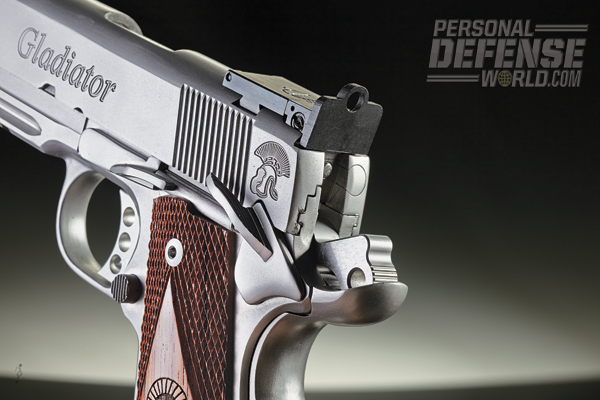
Every expert has their opinion about sights, but ghost rings are not on my list of preferred pistol sights. Adjustable is fine, especially for pistols carried in tactical rigs, but my preference would remain a U-notch or standard blade. Maximus Arms now offers three sight options. If you purchased a Gladiator with a ghost ring sight, Maximus will change out your rear sight free of cost (save for shipping).
The Gladiator was really nice to shoot and proved very accurate, and the changes to the frame fit my hands rather well. It’s a great pistol, and priced about where you would expect for a 1911 with these options. Stainless steel pistols are great for long-term carry, especially in really harsh weather, and the Gladiator’s 17-4PH steel should make it last longer and operate smoother.
![“Maximus Arms began in 2010 with the idea of building an ‘improved’ single-stack 1911 pistol. Looking at materials used to make the M1 Abrams tank, it settled on 17-4PH stainless steel...[I]t should provide for a very long service life in a 1911 pistol.”](https://cdn.athlonoutdoors.com/wp-content/uploads/2014/06/Maximus-Gladiator-1.jpg)
